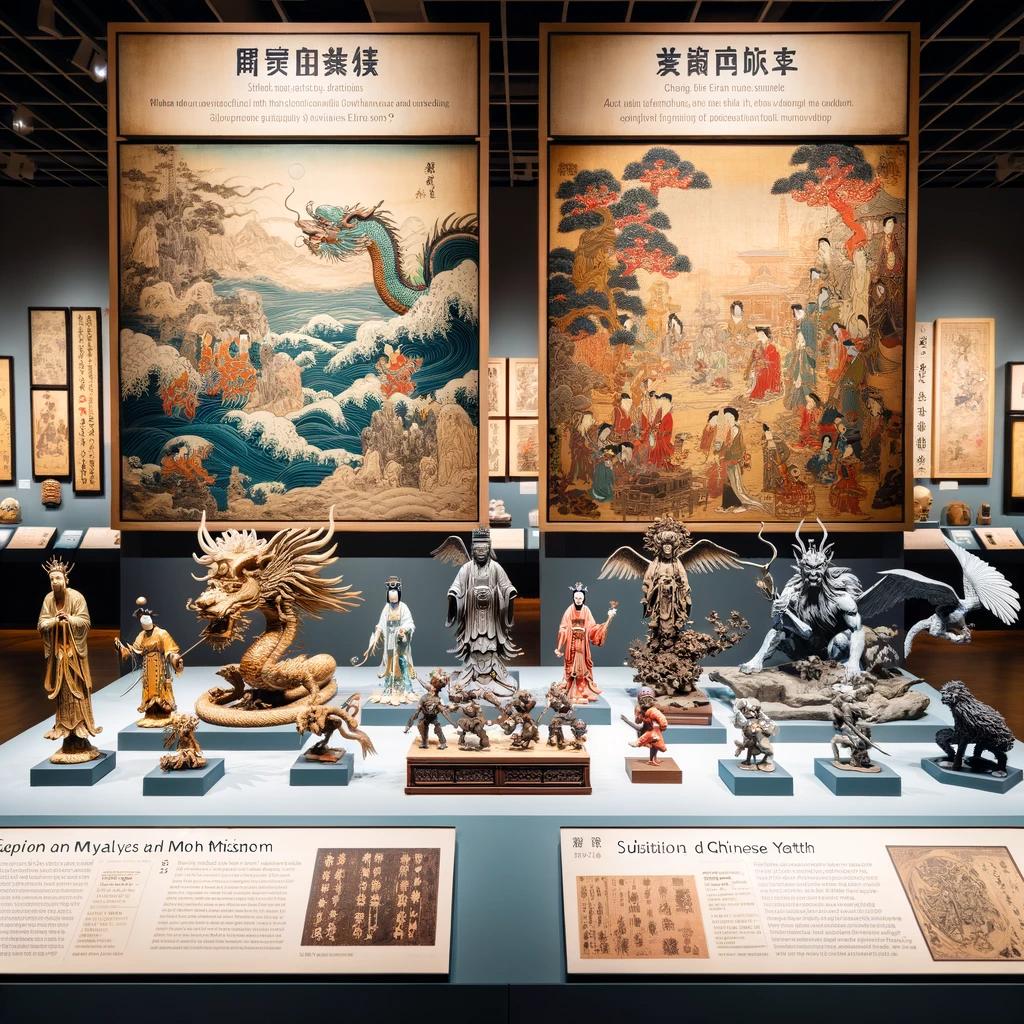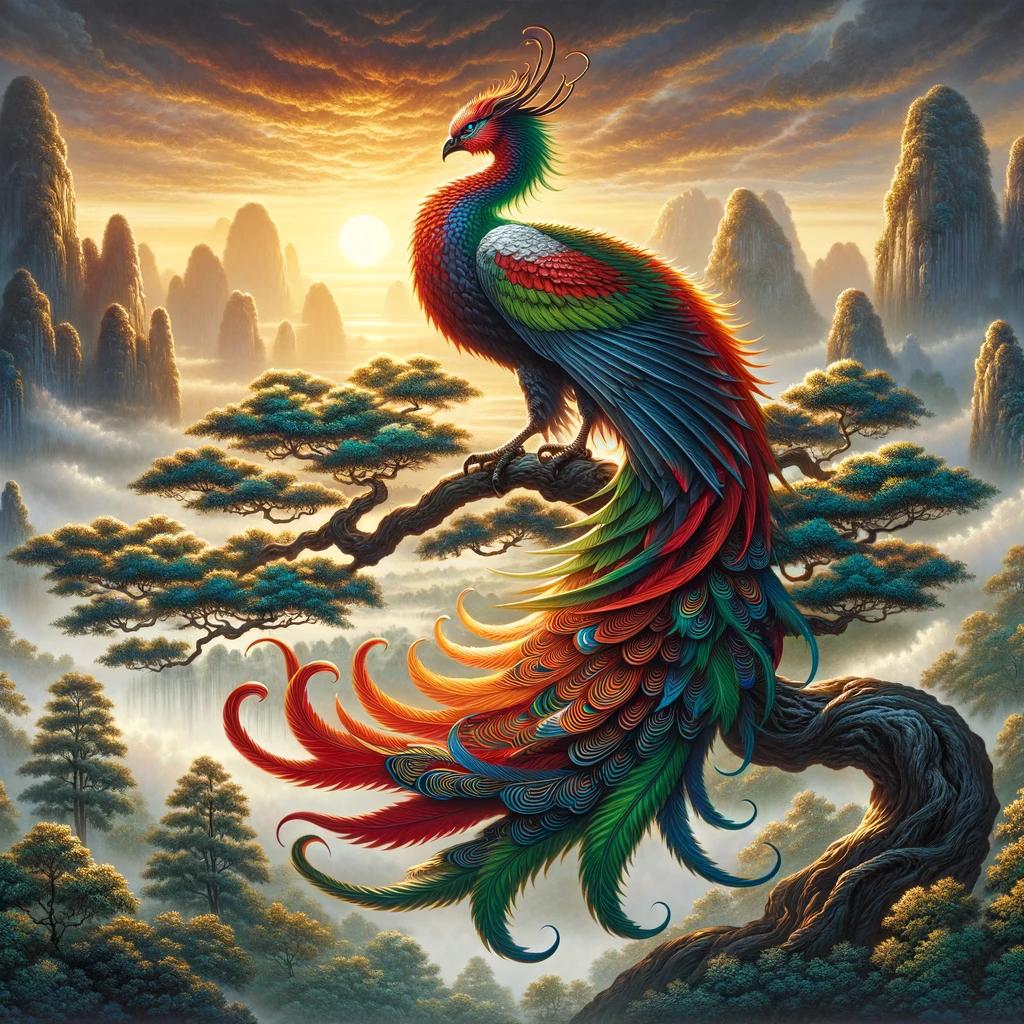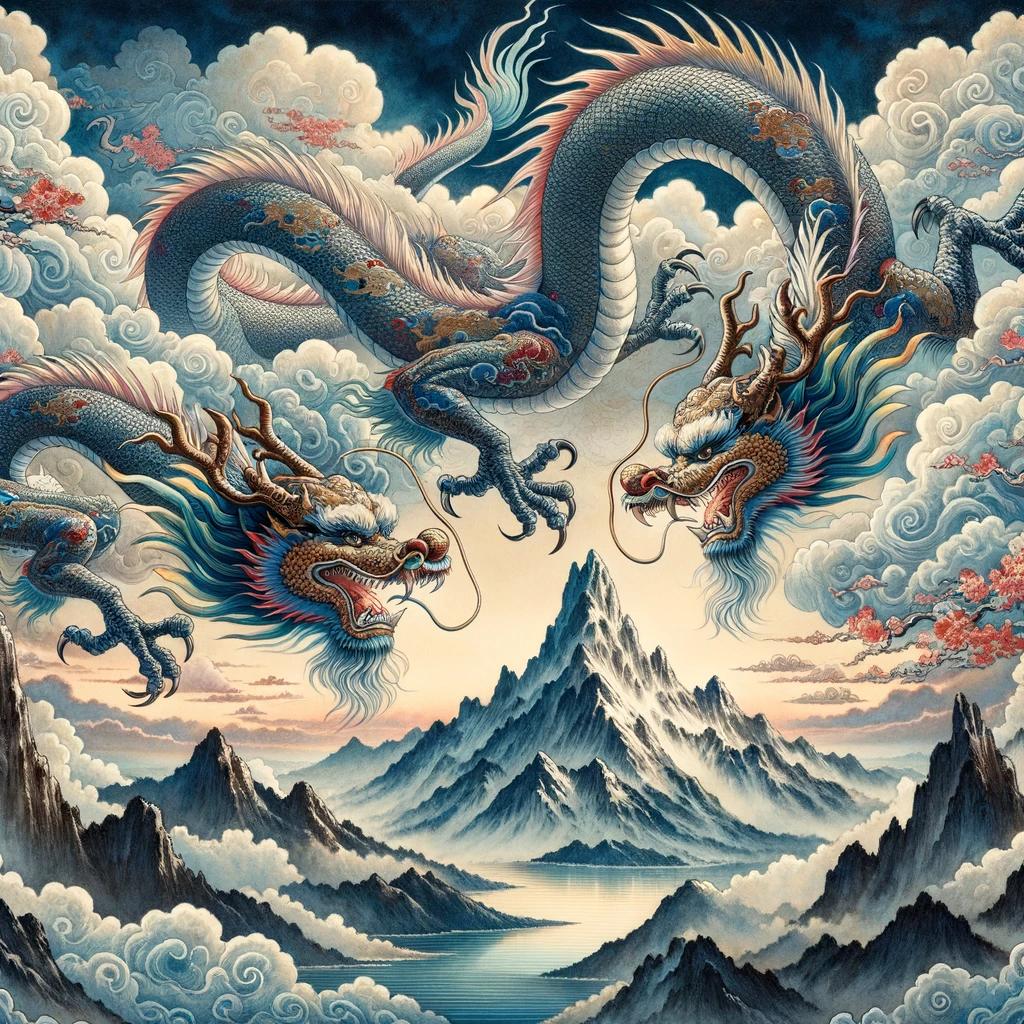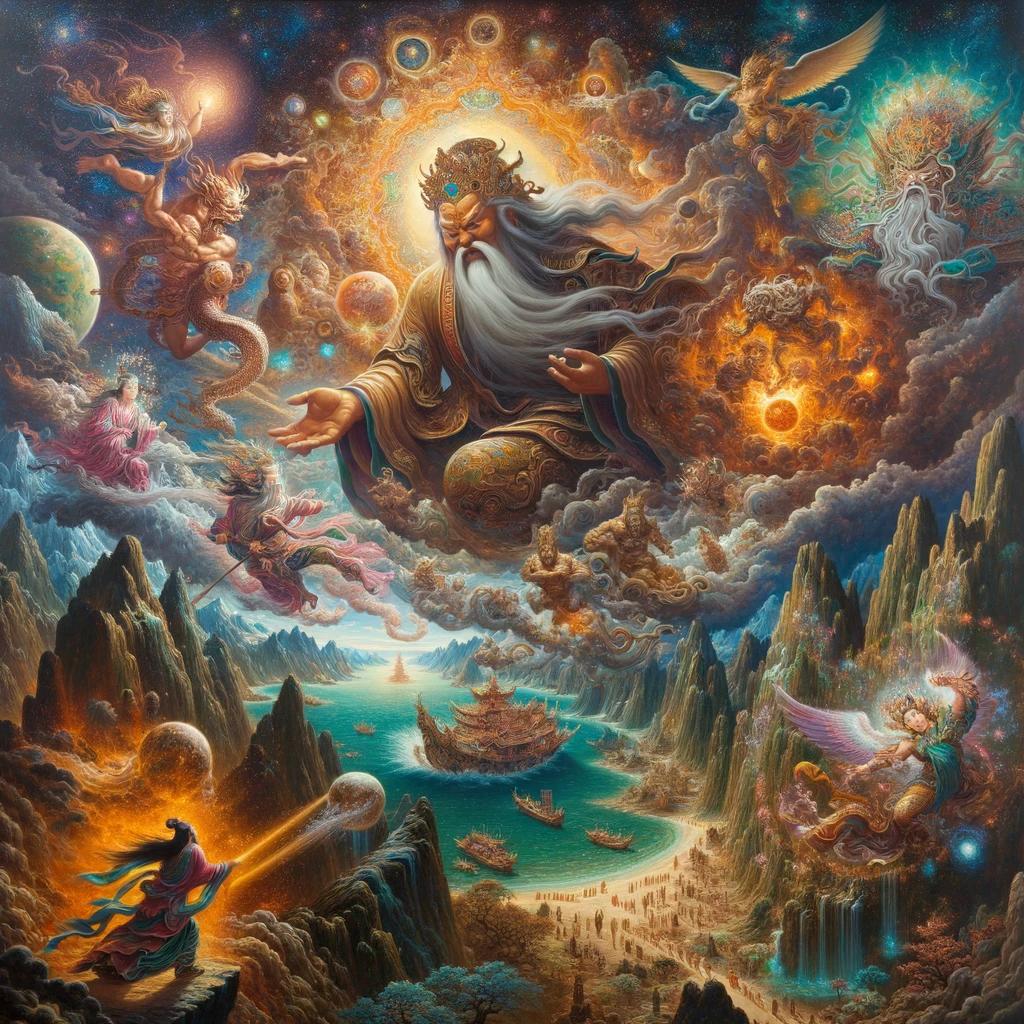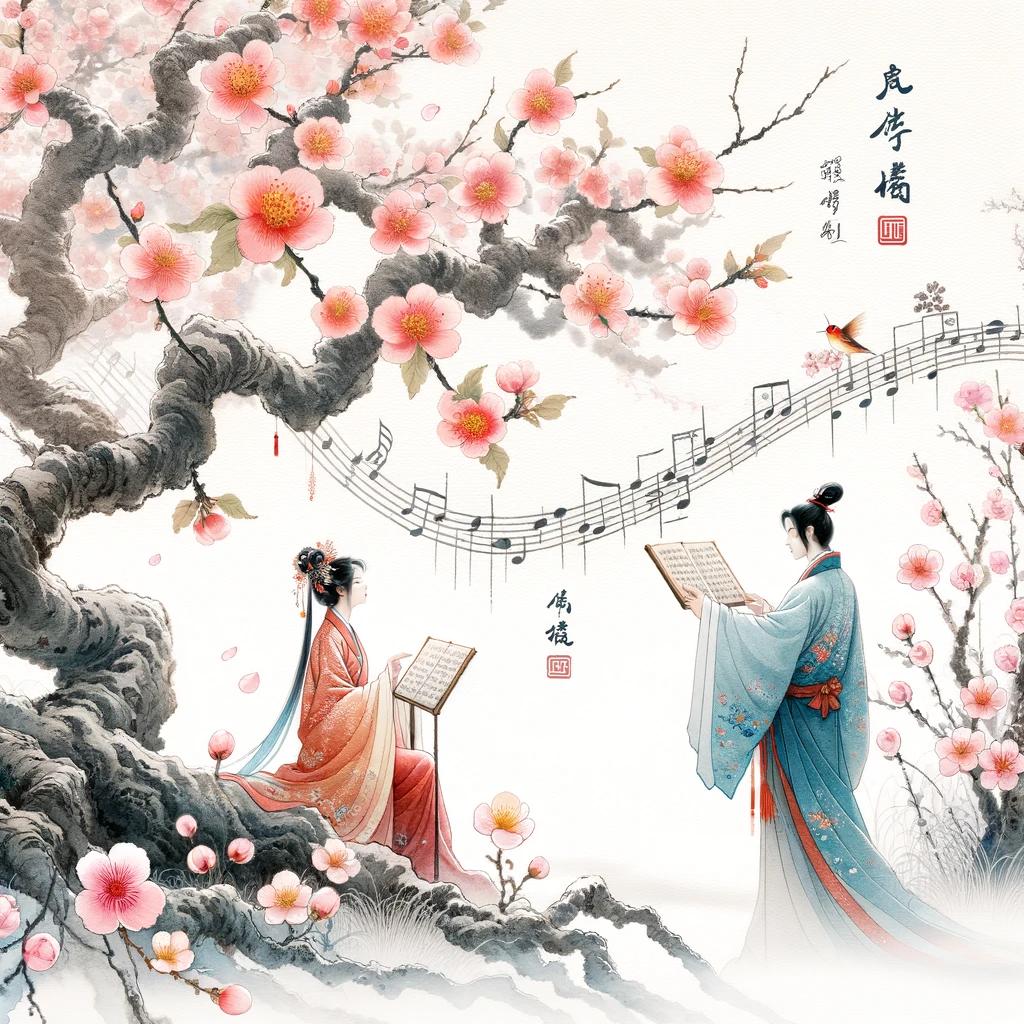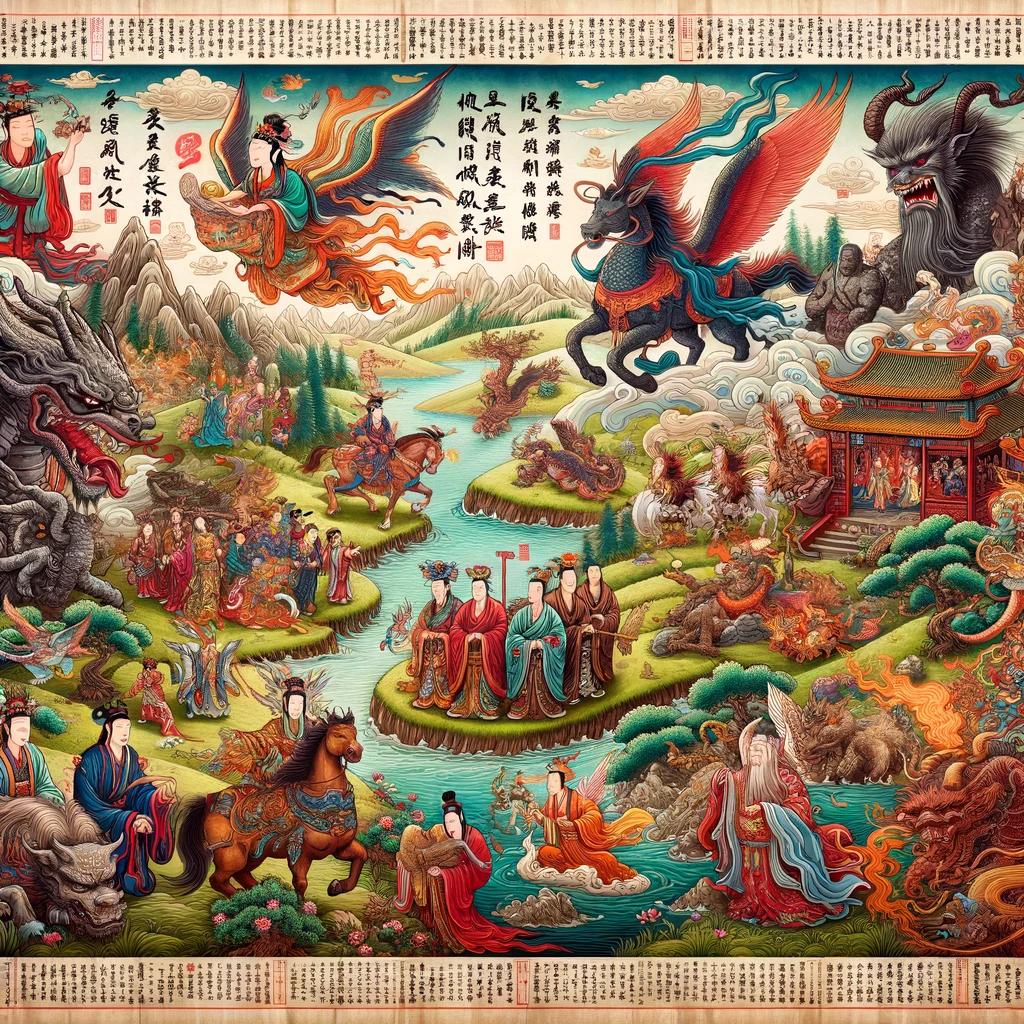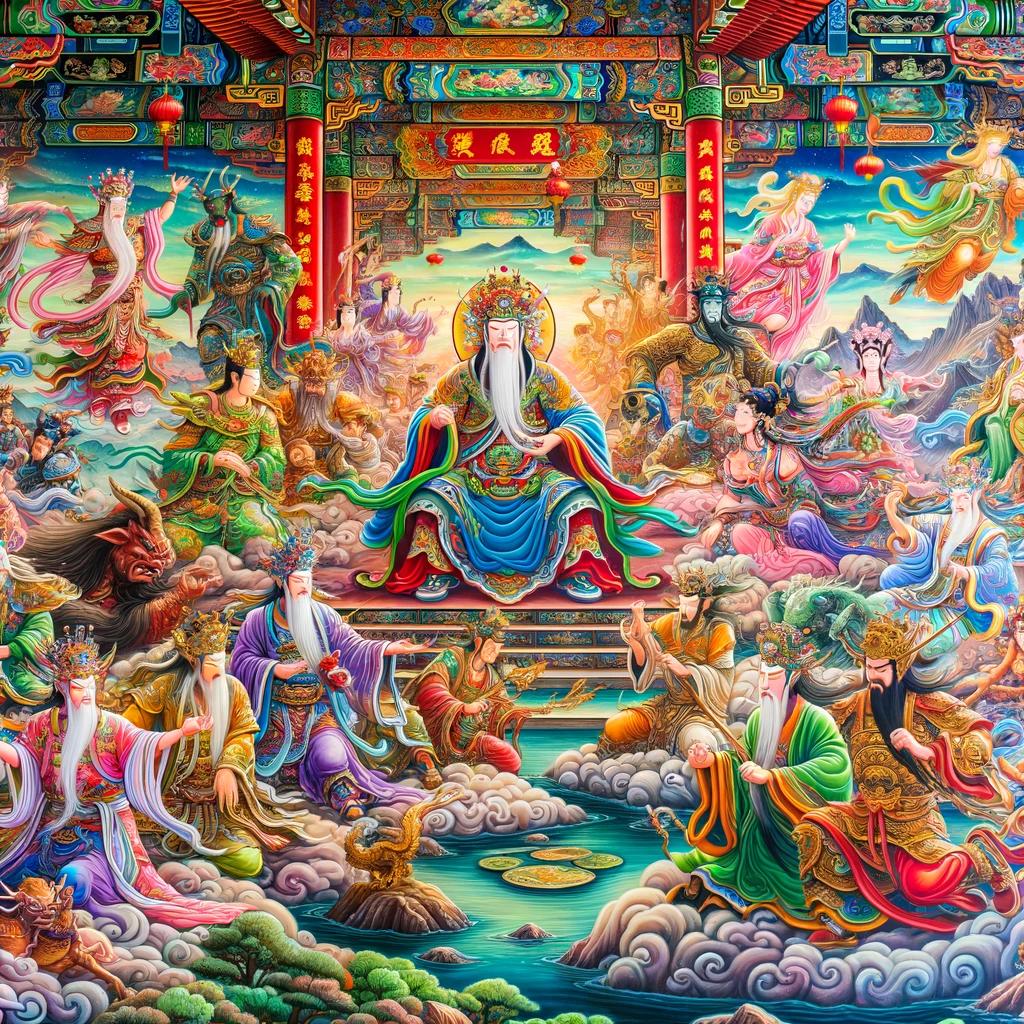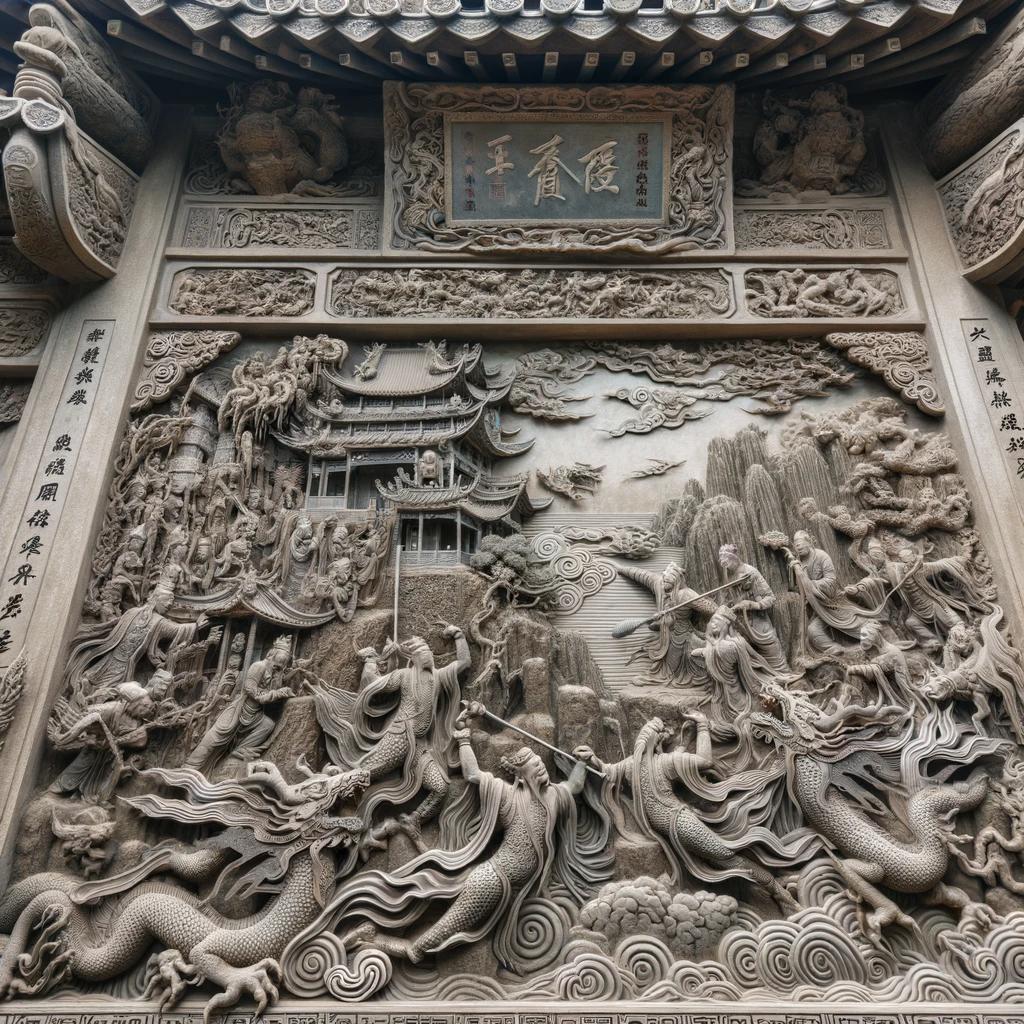Chinese Mythology vs Japanese Mythology: A Comparative Exploration of Ancient Eastern Legends
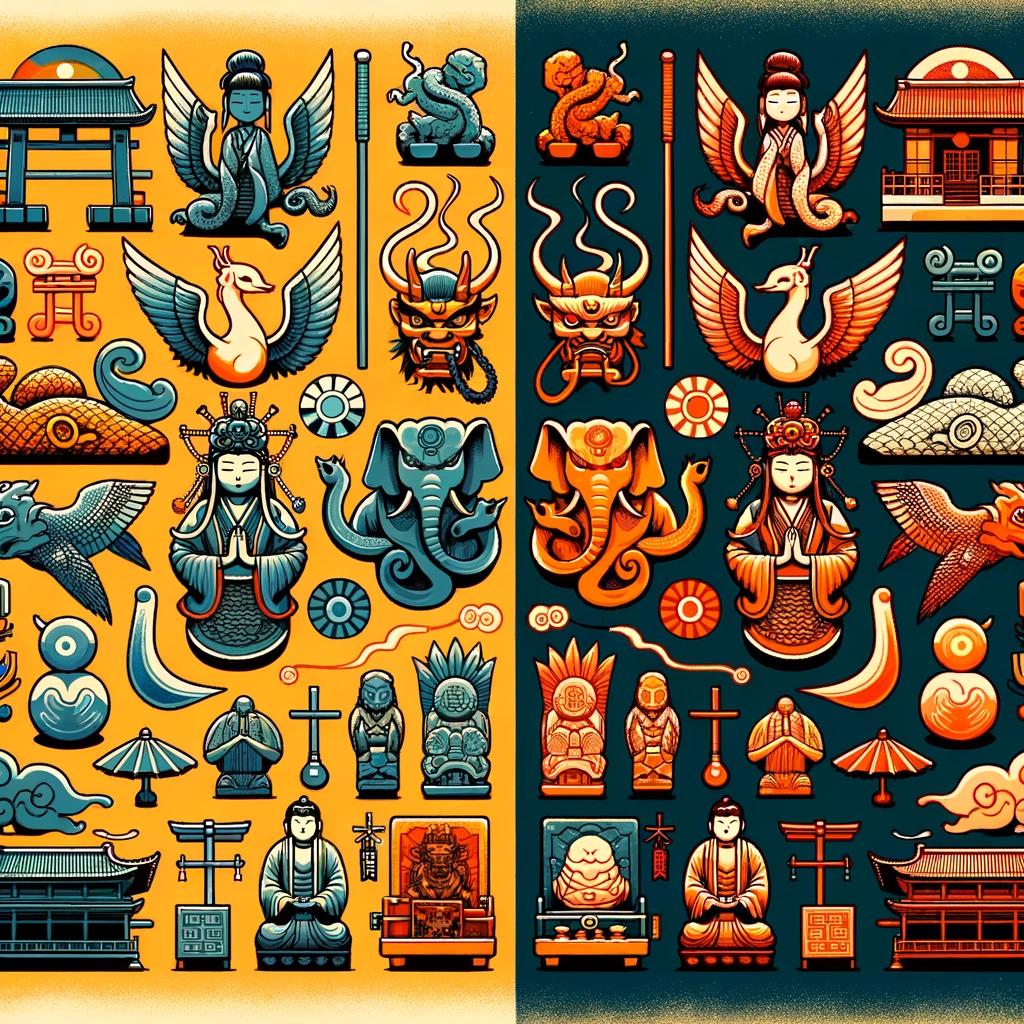
Chinese Mythology vs Japanese Mythology is a comparative exploration of these ancient Eastern legends. This article provides an overview of both mythologies, delves into their creation myths, introduces key themes and characters, and highlights their cultural significance.
Additionally, it examines the impacts on literature, art, and popular culture, offers a comparative analysis, and discusses the relevance of these mythologies in modern times. The article concludes by considering future directions for further study in this fascinating subject.
Overview of Chinese and Japanese Mythology
Chinese and Japanese mythologies are rich and fascinating, offering a glimpse into the ancient beliefs and cultural values of these East Asian civilizations. This section provides a comprehensive overview of both mythologies, exploring their origins, development, and cultural significance.
We delve into the unique characteristics of Chinese and Japanese mythologies, including their distinct creation myths, key themes, and prominent characters.
Origins and Development of Chinese Mythology
Chinese mythology traces its origins back thousands of years, evolving alongside the development of Chinese civilization. It encompasses a vast array of deities, legendary figures, and mythical creatures, reflecting the deep connection between the spiritual and natural worlds in Chinese culture.
The origins of Chinese mythology can be found in ancient texts such as the “Classic of Mountains and Seas” and “Shanhaijing,” which provide a glimpse into the early beliefs and cosmology of the Chinese people.
Influences on Japanese Mythology
Japanese mythology has been significantly influenced by Chinese mythology throughout history. The introduction of Buddhism and Taoism from China brought new elements and deities into the existing Japanese belief system, which merged with native Shinto beliefs.
These influences gave rise to a unique blend of spiritual beliefs in Japan, characterized by the coexistence of deities from different origins and a deep reverence for nature and ancestral spirits.
Cultural Significance of Chinese and Japanese Mythology
Chinese and Japanese mythologies hold immense cultural significance for their respective societies. These mythologies have deeply shaped the religious, artistic, and literary traditions of China and Japan, providing a foundation for understanding their historical development and cultural values.
The beliefs and symbols found in these mythologies continue to influence various aspects of contemporary East Asian societies, including festivals, rituals, and traditional arts.
Comparison of Creation Myths
This section explores the intriguing creation myths of both Chinese and Japanese mythology. Delving into the origins of these mythologies, it uncovers the unique tales of how the world came into existence according to each culture’s beliefs.
Chinese Creation Myths
In Chinese mythology, two prominent creation myths stand out: the Myth of Pangu and the Myth of Nuwa. The Myth of Pangu speaks of the creation of the universe by a primordial being, Pangu, who separated the chaos of Yin and Yang, and eventually became the world itself.
On the other hand, the Myth of Nuwa tells the story of Nuwa, a goddess who formed humans from clay and saved the world from destruction.
The Myth of Pangu
The ancient Chinese believed that in the beginning, there was chaos, represented by the combination of Yin and Yang.
Pangu emerged from this chaos and started to create the world. For 18,000 years, he grew and separated Yin and Yang, along with Heaven and Earth. When Pangu ultimately died, his body transformed into different elements that formed the universe as we know it today.
The Myth of Nuwa
Nuwa, a goddess with a human-like form, is credited with the creation of humans. When a great catastrophe struck, causing the heavens to crack and the Earth to crumble, Nuwa used clay to shape figures resembling herself.
She brought them to life, giving birth to the human race and ensuring the continuity of life on Earth.
Japanese Creation Myths
Japanese mythology features intriguing creation myths that are rich in symbolism and mystery. Among them, two significant myths stand out: the Myth of Izanagi and Izanami, and the Myth of Amaterasu.
The Myth of Izanagi and Izanami
The creation myth of Izanagi and Izanami describes how the divine couple descended from the heavens and created the earthly world.
They were tasked with the mission to give birth to the islands of Japan and populate them. However, a tragic incident during their sacred union led to the birth of destructive deities, transforming their idyllic world forever.
The Myth of Amaterasu
Amaterasu, the goddess of the sun, plays a crucial role in Japanese mythology. According to the myth, Amaterasu’s retreat into a cave plunged the world into darkness. The other deities devised a plan to coax her out, bringing light back to the world.
This myth reflects the belief in the power of the sun and its significance in Japanese culture and society.
The comparison of these creation myths reveals unique perspectives on the origins of the universe in Chinese and Japanese culture.
Each tradition presents distinct interpretations and narratives, reflecting the profound cultural beliefs and values embedded within both mythologies.
Key Themes and Characters in Chinese Mythology
Chinese mythology encompasses a rich tapestry of gods, goddesses, and legendary figures, each playing a significant role in the cultural and spiritual traditions of ancient China. This section explores key themes and characters in Chinese mythology, shedding light on their fascinating narratives and symbolic meanings.
Gods and Goddesses in Chinese Mythology
Chinese mythology is replete with a pantheon of powerful gods and goddesses, each representing different aspects of nature, cosmic forces, and human virtues. These deities held immense influence over the Chinese people, and their tales captivated both the imagination and religious beliefs of ancient China.
The Jade Emperor and the Three Pure Ones
The Jade Emperor, also known as Yuhuang Shangdi, is the highest-ranking deity in Chinese mythology. He presides over the heavens, acting as the supreme ruler and arbiter of justice.
Alongside him are the Three Pure Ones, consisting of Yuanshi Tianzun, Lingbao Tianzun, and Daode Tianzun, who govern the realms of creation, cultivation, and divine wisdom.
Guanyin, Goddess of Mercy
Beloved and revered throughout China, Guanyin is a compassionate goddess associated with mercy, compassion, and healing. She is widely worshipped and considered a protector of the weak and suffering, offering solace and aid to those in need.
Legendary Figures and Heroes
Legendary figures and heroes dominate the landscape of Chinese mythology, representing extraordinary individuals whose actions shaped the course of history and continue to inspire generations.
Sun Wukong, the Monkey King
One of the most iconic characters in Chinese mythology, Sun Wukong, also known as the Monkey King, possesses incredible strength and magical abilities.
Endowed with a mischievous nature, he embarks on epic adventures, crossing paths with deities and demons, and ultimately achieving enlightenment and immortality.
Lady White Snake
A beloved figure in Chinese folklore, Lady White Snake is a powerful and benevolent spirit. Gifted with supernatural abilities, she demonstrates love, loyalty, and resilience. Her story has been immortalized in various literary and theatrical adaptations, symbolizing the enduring power of love and the complexities of human nature.
The vibrant mythology of ancient China continues to captivate countless individuals, resonating with themes of divinity, morality, and heroism. Through the gods, goddesses, and legendary figures, Chinese mythology offers a glimpse into the profound beliefs, values, and cultural foundations of this ancient civilization.
Key Themes and Characters in Japanese Mythology
Japanese mythology is rich with a wide array of deities, spirits, legendary figures, and heroes that form the core of its captivating narratives. Within Japanese mythology, we find a fascinating interplay between the celestial and earthly realms, encompassing both benevolent and malevolent beings.
Let’s explore some of the key themes and characters that make Japanese mythology so captivating.
Deities and Spirits in Japanese Mythology
In Japanese mythology, a pantheon of deities and spirits play significant roles in shaping the cosmos and governing various aspects of human existence. Among the most revered figures is Amaterasu, the Sun Goddess.
She is believed to be the source of light and life, providing warmth and sustenance to the world. Another prominent deity is Susanoo, the Storm God, who controls the forces of nature, bringing both chaos and rebirth.
Alongside these major deities, there exist numerous lesser-known spirits that embody various natural phenomena or possess specific powers. These spirits often exemplify the harmonious relationship between humans and nature and are revered for their guidance, protection, and influence over different aspects of life, such as agriculture, fertility, and healing.
Legendary Figures and Heroes
Japanese mythology is also replete with legendary figures and heroes whose tales serve as sources of inspiration and cultural identity. One such figure is Momotarō, known as the Peach Boy, who was born from a peach and grows up to become a brave warrior.
Momotarō symbolizes the triumph of good over evil and is often regarded as a symbol of hope and bravery for the Japanese people.
Another iconic character is Tamamo-no-Mae, a mythical nine-tailed fox with magical abilities. Tamamo-no-Mae is renowned for her beauty and intelligence but is also associated with seduction and manipulation. Her story represents the complex nature of desire and the consequences that can arise from unchecked ambition.
Through these legendary figures and heroes, Japanese mythology not only entertains but also imparts moral lessons and reflects societal values, fostering a sense of cultural pride and identity among the Japanese people.
Cultural Impacts and Influences
Cultural Significance of Chinese Mythology in China
Chinese mythology holds a profound cultural significance in China, deeply ingrained in the collective consciousness of its people. These ancient legends serve as a cultural foundation, providing moral and ethical guidance, shaping societal values, and connecting individuals to their historical and spiritual heritage.
Chinese mythology’s influence can be seen in various aspects of Chinese culture, from traditional literature and poetry to visual arts and performing arts. Its rich symbolism and archetypal characters continue to inspire and resonate with the Chinese people, fostering a sense of identity and pride in their cultural heritage.
Cultural Significance of Japanese Mythology in Japan
Japanese mythology holds a similar cultural significance within Japan, playing a vital role in shaping its national identity and cultural fabric. These enchanting tales are deeply integrated into Japanese society, influencing its values, customs, and art forms.
Japanese mythology’s impact can be observed in traditional rituals, festivals, and even in contemporary popular culture. The symbolic figures and moral teachings found in Japanese mythology continue to inspire creativity and imagination in various artistic expressions, such as literature, painting, sculpture, theater, and manga.
It serves as a powerful link to Japan’s ancient past, fostering a sense of continuity and pride in its cultural heritage.
Influences on Literature, Art, and Popular Culture
The influence of Chinese and Japanese mythology extends beyond their respective countries, transcending borders and captivating audiences worldwide. These mythologies have inspired countless works of literature, both classic and modern, as authors draw upon their captivating narratives, iconic characters, and moral lessons to create new stories and worlds.
In the realm of visual arts, the mythology of both cultures has provided a rich source of inspiration for painters, sculptors, and illustrators, influencing their artistic styles and subject matters.
Moreover, Chinese and Japanese mythology have left an indelible mark on popular culture, particularly in the entertainment industry.
From movies and television shows to video games and anime, these captivating stories and legendary characters continue to captivate global audiences. They have become a source of inspiration for filmmakers, animators, and game developers, who reinterpret and reimagine these ancient tales for contemporary audiences, ensuring that the cultural impact of Chinese and Japanese mythology remains alive and relevant in the modern era.
Comparative Analysis: Chinese vs Japanese Mythology
The comparative analysis of Chinese and Japanese mythology delves into the similarities and differences between these two rich cultural traditions. It explores various aspects such as themes, narrative structures, mythological concepts, beliefs, and their impact on cultural identity and nationalism.
Similarities in Themes and Narrative Structures
Both Chinese and Japanese mythology share common themes that reflect universal human experiences and values. They portray gods and heroes with extraordinary abilities and often explore the relationships between humans and supernatural beings.
Both mythologies also incorporate elements of creation, transformation, and journeys of self-discovery.
In terms of narrative structures, both Chinese and Japanese myths feature complex storylines with interconnected characters and events. They employ symbolism, metaphor, and allegory to convey moral messages and philosophical concepts.
The use of mythical creatures and supernatural realms adds depth and fascination to their narratives.
Differences in Mythological Concepts and Beliefs
Despite their similarities, Chinese and Japanese mythology also exhibit distinct differences in terms of their mythological concepts and beliefs. Chinese mythology places a strong emphasis on the concept of harmony and balance, often represented by the opposing forces of yin and yang.
This reflects the cultural values of unity and interconnectedness.
On the other hand, Japanese mythology emphasizes the connection between nature and spirituality. It incorporates Shinto beliefs that venerate various deities and spirits associated with natural elements such as mountains, rivers, and animals.
This reverence for nature is deeply ingrained in Japanese culture.
Impact on Cultural Identity and Nationalism
The myths and legends of both Chinese and Japanese cultures have significantly influenced their respective cultural identities and nationalistic sentiments. These ancient stories and characters evoke a sense of pride, heritage, and belonging among the people.
In China, the mythological figures and stories continue to shape the collective consciousness and identity of the Chinese people. They are often invoked to reinforce nationalistic ideals and cultural values, promoting a sense of unity and patriotism.
In Japan, the themes and symbols from mythology are woven into various aspects of Japanese society, including art, literature, and popular culture. They contribute to the unique Japanese aesthetic and serve as a source of inspiration and cultural pride.
Overall, the comparative analysis of Chinese and Japanese mythology highlights both the commonalities and distinctions between these two ancient traditions. By examining their shared themes, narrative structures, mythological concepts, beliefs, and their impact on cultural identity and nationalism, we gain a deeper understanding of the rich tapestry of Eastern mythology.
Perspectives on Chinese and Japanese Mythology Today
Modern Interpretations and Adaptations
In the modern era, Chinese and Japanese mythology continues to inspire various forms of artistic expression and creative adaptations. Artists, writers, filmmakers, and game developers draw upon the rich mythological traditions to create captivating stories, characters, and visuals that resonate with contemporary audiences.
Through modern interpretations, myths are given new life and relevance, presenting ancient tales in innovative formats. These adaptations aim to bridge the gap between the ancient and the modern, showcasing the enduring power and fascination of Chinese and Japanese mythology.
Relevance and Revival of Traditional Mythology
Traditional mythology remains relevant today as it provides insights into cultural beliefs, values, and societal norms of the past. As contemporary societies seek to reconnect with their roots, there has been a resurgence of interest in traditional mythologies.
Efforts to revive traditional mythology include cultural festivals, theatrical performances, and educational initiatives. These initiatives not only preserve the heritage and wisdom embedded in the myths but also foster a deeper appreciation and understanding of the cultural identities associated with Chinese and Japanese mythology.
Insights and Lessons from Ancient Legends
The ancient legends of Chinese and Japanese mythology offer valuable insights and lessons that resonate with modern audiences. The stories reflect universal themes such as love, heroism, reconciliation, and the balance of nature.
By delving into the lessons and wisdom imparted by these ancient legends, individuals can gain a deeper understanding of the human condition, cultural values, and the interconnectedness of humanity and the natural world.
These timeless lessons continue to be a source of inspiration and guidance in navigating the complexities of contemporary life.
Future Directions and Areas for Further Study
In the realm of Chinese and Japanese mythology, there are numerous avenues for future exploration and study. Researchers and scholars can delve deeper into various aspects of these rich mythological traditions, offering new insights and expanding our understanding of their cultural significance.
Here are some potential areas for further investigation:
- Comparative Analysis: While we have touched upon the similarities and differences between Chinese and Japanese mythology, a more comprehensive comparative analysis could be conducted.
This would involve examining specific themes, characters, and narrative structures, providing a deeper understanding of the intricate connections and distinctions between these two mythological systems.
- Influence on Contemporary Literature and Arts: It would be worthwhile to explore how Chinese and Japanese mythology continue to inspire and influence modern and contemporary literature, art, and popular culture.
This could involve analyzing the use of mythological motifs in novels, films, paintings, and performances, as well as studying the adaptations and reinterpretations of ancient legends in various creative mediums.
- Role of Mythology in Shaping Cultural Identity: Examining how Chinese and Japanese mythologies contribute to shaping cultural identity and nationalistic sentiments would be an interesting avenue of research.
This could involve investigating the portrayal of mythological figures as national heroes or symbols of cultural heritage, as well as exploring how these mythologies are taught and preserved in educational systems.
- Interdisciplinary Approaches to Mythological Studies: Collaborative research initiatives between scholars of mythology, anthropology, archaeology, history, and other related disciplines can yield valuable insights.
By combining methodologies and perspectives, a more holistic understanding of Chinese and Japanese mythologies can be achieved, shedding light on their historical, social, and psychological dimensions.
- Revival and Preservation of Traditional Myths: Exploring how traditional myths are being revived and preserved in contemporary Chinese and Japanese societies is an essential area for study.
This could involve investigating the role of cultural institutions, festivals, and storytelling traditions in keeping the ancient myths alive, as well as analyzing the motivations behind the resurgence of interest in these mythological narratives.
Overall, continued research into Chinese and Japanese mythology offers the opportunity to deepen our appreciation for these ancient cultural traditions and their enduring significance.
By embarking on future studies in these areas, we can unravel further layers of mythology, unraveling their complexities and uncovering new perspectives on their relevance to our modern world.
.

